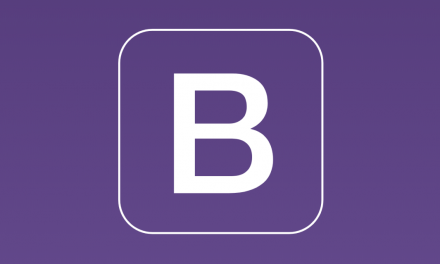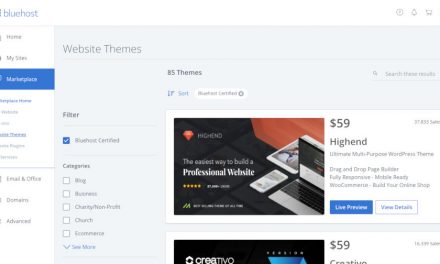Ihave been thinking a lot about digital gardens this week. A blog post by Tom McFarlin re-introduced me to the term, which led me down a rabbit hole of interesting ideas on creating a digital space that is more personalized and tended in a way that is antithetical to the chronological blog.
The concept of digital gardens is not new. It predates the modern blog, but there may be a resurgence, albeit small, of the sort of curated content that grows within a digital garden.
The term “digital garden” is not well-defined. In general, it is a collection of thoughts, unfinished projects, links, and much more. However, it can be different and wholly unique to the individual. I would like to broaden the term to enclose any sort of website that allows you to truly browse without viewing posts chronologically. Digital gardens, collections, spaces — call it what you want.
I began my personal website in 2003. I hacked together a main page with a few internal links. I began blogging before I knew what blogging was. This was all done with basic .txt files that I edited in Notepad on Windows. I knew enough PHP to load and display those files. My blog posts were merely random thoughts — bits and pieces of my life.
Despite having something that worked sort of like a blog, I maintained various resources and links of other neat ideas I found around the web. It was a digital garden that I tended, occasionally plucking weeds and planting new ideas that may someday blossom into something more.
I created a films page in which I shared 30-second trailers of short films I was planning. I maintained a list of my DVD collection. I had a page in which I showcased hate messages I received on my guestbook. All in good fun, of course. I kept a curated list of cool webpages to visit.
All of this was a painstaking, manual process before WordPress crashed into my life, but it was still fun.
Over the years, WordPress changed everything for me. I officially became a blogger. The problem was that, at a certain point, blogging became work. I needed to think about keywords, perfecting a post title, and making sure that each word was carefully crafted. The initial joy I had with my personal space had waned.
“The idea of a ‘blog’ needs to get over itself,” wrote Joel Hooks in a post titled Stop Giving af and Start Writing More. “Everybody is treating writing as a ‘content marketing strategy’ and using it to ‘build a personal brand’ which leads to the fundamental flawed idea that everything you post has to be polished to perfection and ready to be consumed.”
It is almost as if he had reached down into my soul and figured out why I no longer had the vigor I once had for sharing on my personal blog. For far too long, I was trying to brand myself. Posts became few and far between. I still shared a short note, aside, once in a while, but much of what I shared was for others rather than myself.
I still love the idea of a personal blog, but there is room for this space to be reshaped. Personal websites can be so much more than a progression of posts over time, newer posts showing up while everything from the past is neatly tucked on “page 2” and beyond.
Amy Hoy, in How the Blog Broke the Web, describes the downfall of the digital gardens that once grew across the landscape of the web. It is a history of how personal websites, particularly through the ease of use of the modern CMS, changed for the worse. Instead of carefully tending to our gardens, we became lazy caretakers of our space, molding our content based on the tools the system provided.
She concluded with:
“There are no more quirky homepages. There are no more amateur research librarians. All thanks to a quirky bit of software produced to alleviate the pain of a tiny subset of a very small audience. That’s not cool at all.”
She shares my nostalgia for the early web in which webmasters poured everything about themselves into their little slice of it. It was done over the sweat and tears of late-night HTML mastery. It was about fighting weird CSS quirks just to align something on the center of the page. No grid or flex-box existed in those days.
While I lament the loss of some of the artistry of the early web and lay much of the blame at the feet of blogging platforms like WordPress, such platforms also opened the web to far more people who would not have otherwise been able to create a website. Democratizing publishing is a far loftier goal than dropping animated GIFs across personal spaces.
WordPress is in a position to reshape the web into whatever we want.
Throughout the platform’s history, end-users have remained at the mercy of their WordPress theme. Most themes are built around what WordPress allows out of the box. They follow a similar formula. Some may have a fancy homepage or other custom page templates. But, on the whole, themes have been primarily built around the idea of a blog. Such themes do not give the user true control over where to place things on their website. While some developers have attempted solutions to this, most have never met the towering goal of putting the power of HTML and CSS into the hands of users through a visual interface. This lack of tools has given rise to page builders and the block editor.
WordPress has not been, by and large, an ideal platform for building a unique digital space, unless you had the technical know-how to wrangle its front-end output into something unique. At times, that is more frustrating than building a simple HTML page.
This is the reason that I continually push the Gutenberg project. I write about some of the wild and wacky ideas. I share things like a T-Rex game within a block.
I want end-users to be able to create their own digital gardens. I want them to put a large yellow box on their homepage to share a notice that everyone should read “this important page” on their site. I want them to be able to do this without having to learn how to code or ask their theme author how to make such customizations. It should be as simple as clicking a few buttons.
I also want them to be able to easily build something like Tom Critchlow’s wikifolder, a digital collection of links, random thoughts, and other resources.
More than anything, I want personal websites to be more personal.
We’re still in a somewhat frustrating transitional period where WordPress is not even halfway to becoming the platform that it will be. We are still beholden to our themes, though less so than before.
Whether it is a digital garden, a plain ol’ blog, or some new thing we do not have a term for yet, we will all be able to put our unique spin on our personal spaces. It is part of the web that we lost in the last couple of decades with the emergence of the CMS. However, WordPress is on the right path.
It may be a rough ride for some agencies and businesses around the platform, but I am OK with that. They will manage and pull through on the other side, mostly unscathed. I am more concerned about our mission statement of democratizing publishing. And, that mission is not simply about having the ability to write content via a $free system. It is about the freedom to create whatever types of digital homes that we desire without learning to code or breaking the bank.
Pre-Gutenberg WordPress got us part of the way there. It is the post-Gutenberg world that will get us the rest of the way. I am ready to see what people create when they gain the freedom that particular world promises.











